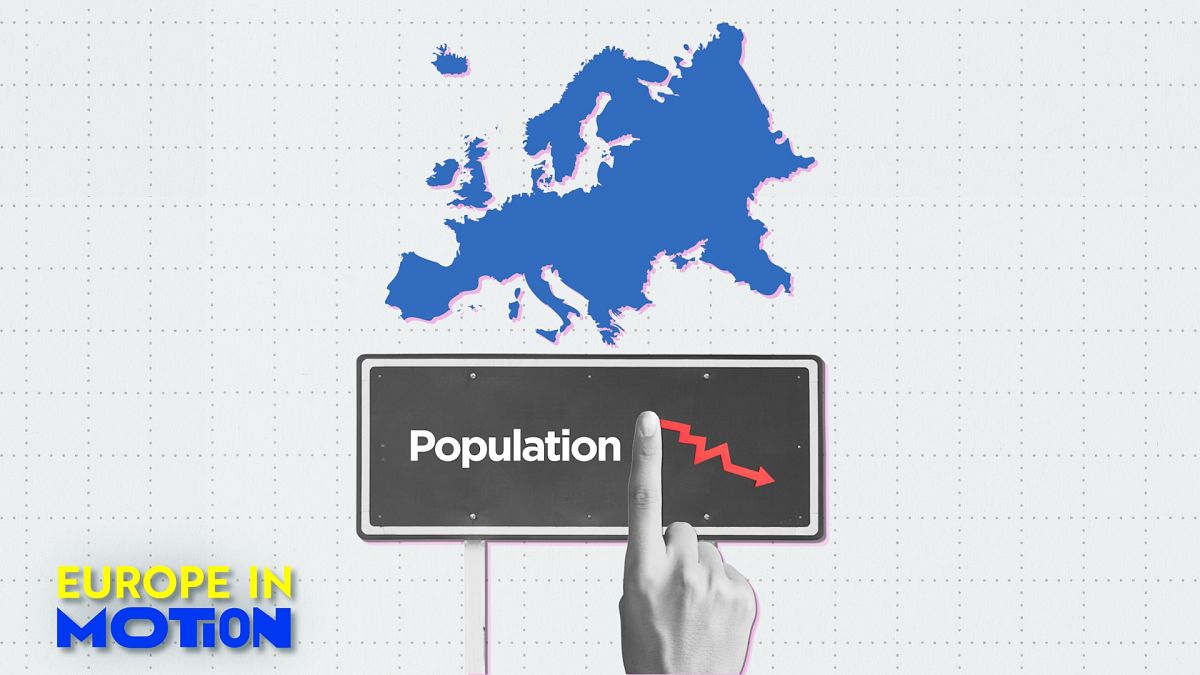The latest data on fertility across the continent is not far from apocalyptic.
For the year 2024, many European countries are reporting their lowest birth rates in several decades, if not on record.
While experts say 2.1 children per woman are needed to keep the population’s size stable, several countries present numbers consistently below 1.5.
Germany: ‘Migration sole cause of population growth’
Germany’s fertility level dropped to 1.35, the lowest level since 1994 (1.24), which came off the back of a recession period.
The country’s Federal Statistical Office (Statistisches Bundesamt) clearly states that “net immigration was the sole cause of population growth”.
Yet, despite the numbers added by migrants, the population grew only by 0.1% or 121,000 people last year. In reality, “more people died than were born”, says the institute.
Data also shows a huge divide between German states. While the population grew in wealthier states, like Bavaria or Hamburg, the sharpest drops were reported in the poorer Thuringia, Saxony and Saxony-Anhalt.
In neighbouring Austria, the situation was even more concerning in 2024, with the country recording the lowest birth rate on record: 1.32 or 77,238 new children, a 0.5% drop, according to Statistik Austria.
Italy: Racing towards becoming a human desert
With 166,000 new arrivals, migration slowed Italy’s population decline, too, but not enough to prevent a decrease.
The country has now fallen steadily to under 60 million people, following years of decline.
The birth rate in 2024 hit a new record low (1.18), says ISTAT: For every 1,000 people, only six babies were born, while 11 died.
To make matters worse, the number of Italians who left the country (156,000) was three times higher than those who returned (53,000).
The largest population drops were reported in the poorer inland areas of the south.
France: ‘Lowest birth rates since the end of World War One’
In France, which is traditionally one of Europe’s most fertile nations, numbers are also dropping fast.
Its fertility rate in 2024, at 1.62, was the lowest since the end of World War I, said the INSEE.
In the past 15 years, the country’s fertility fell by a fifth, just about enough to keep a tiny, positive birth/death balance (+17,000), the lowest since the end of World War II.
Life expectancy provided the only good news. It has now reached 85.6 years for women and 80 for men, a historic record.
England: Elderly childbearing fences off demographic decline
England and Wales are one of the few exceptions in Europe.
That’s thanks to a surprising rise in babies born to fathers over 60 years old (+14%), which helped trigger the first increase in the number of births in England and Wales since 2021 (+0.6%).
On the contrary, births to young mothers and fathers fell, says the INS.
The proportion of children born to foreign parents was significantly high: 40% in England and nearly 20% in Wales, marking a steep 34% increase between 2023 and 2024.
Spain is another exception. According to INE’s provisional data, 2024’s birth rates could rise by 0.4%, thanks to an estimated 322,034 new babies.
As in other countries, Spain’s declining fertility has been accompanied by a rising age among mothers. In the past ten years, the number of mothers aged 40 or above grew by 8.5%.
Nordics: Finland reports lowest rate since 1776 (yes, 1776)
Finland’s fertility rate dropped to 1.25 in 2024, says Statistics Finland. That’s the worst rate since data collection began, in the late 19th century, when the territory was still part of Sweden, which is also facing demographic problems.
The rate reported by Stockholm for last year is 1.43, slightly above most countries and yet the country’s lowest fertility on record, says SCB.
The overall number of new children was 98,500, the deepest point in 23 years, as the population decreased in 169 of the country’s 290 municipalities.
Hungary and Poland: Failure of pro-family policies?
Despite recent policies aimed at boosting natality, Hungary and Poland are also part of the crowded low-fertility club for 2024.
The statistics published by Warsaw are particularly brutal, with a 1.1 birth rate, meaning the number of new children almost halved compared to 1990 (1.9).
Women are also, on average, becoming mothers at 29, much later than 35 years ago, when the average age was just under 23.
Hungary makes no exception with 77,500 new babies last year, the lowest amount ever, on top of a 1.38 birth rate, never as low since 2014, according to Hungary’s KLS.
Read the full article here


